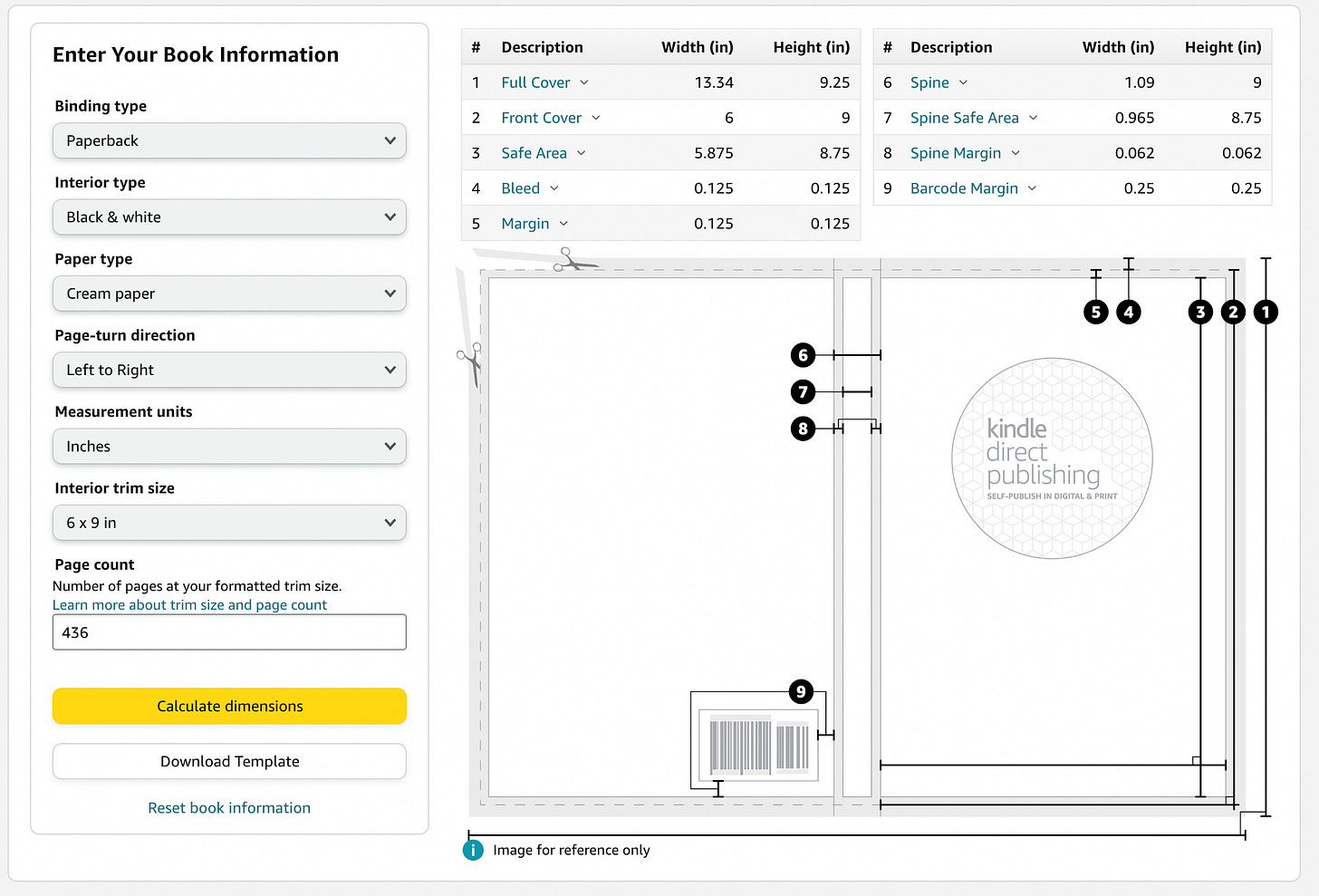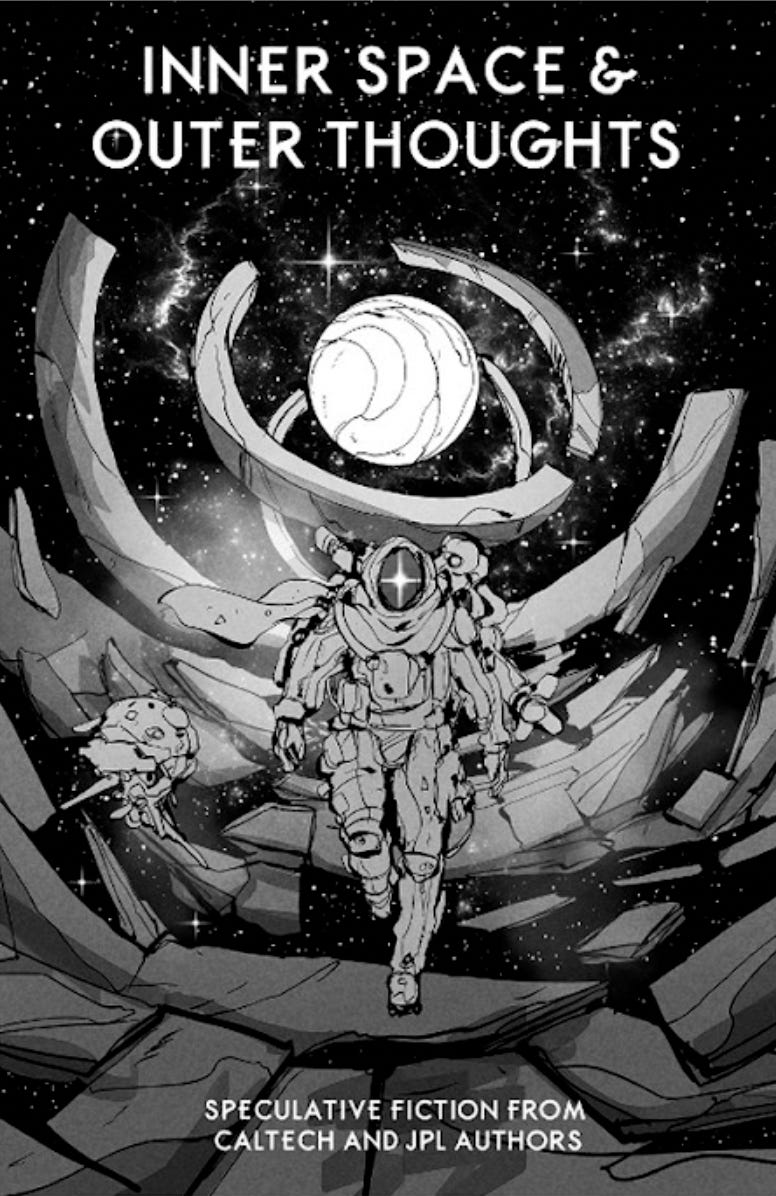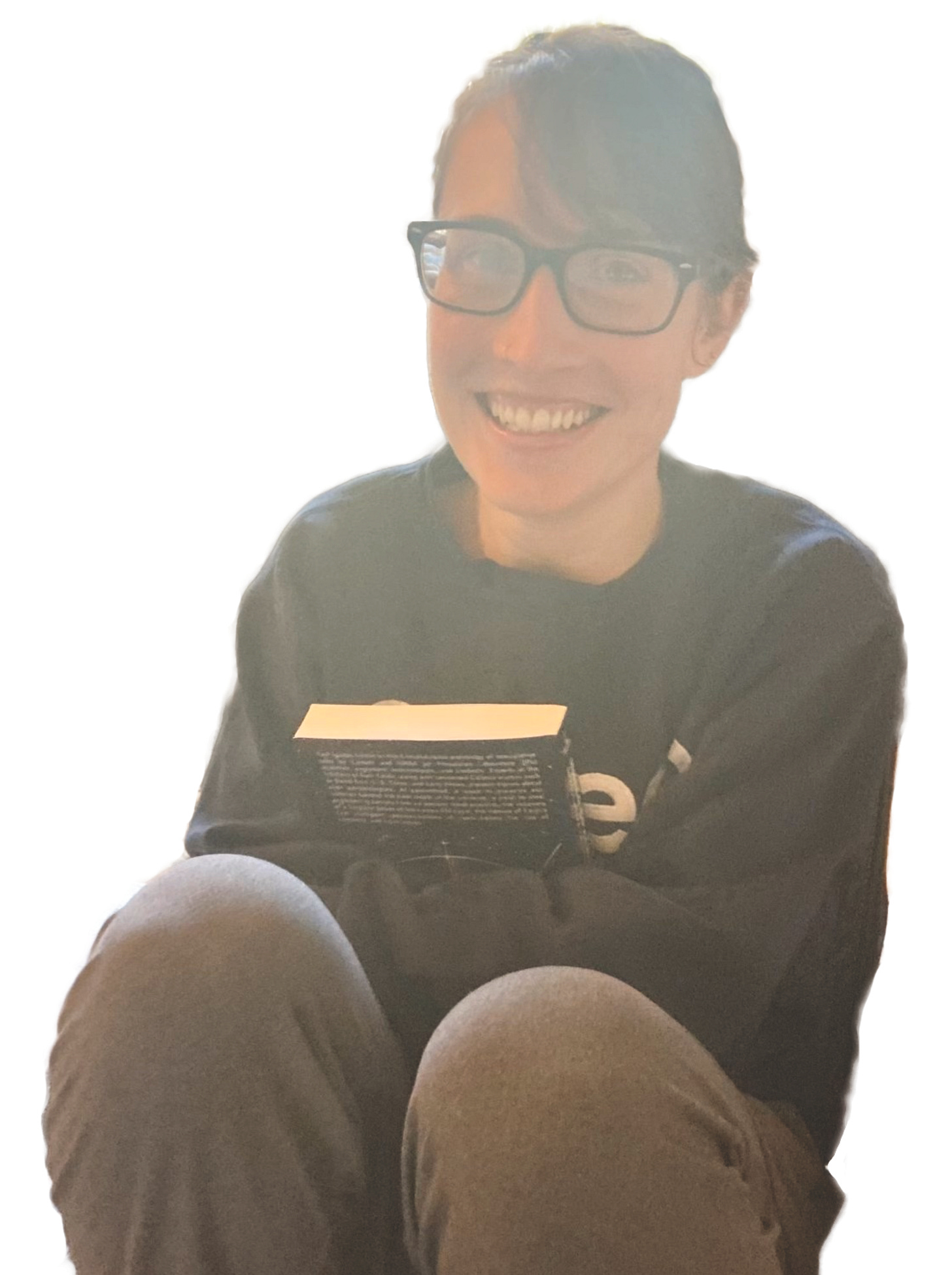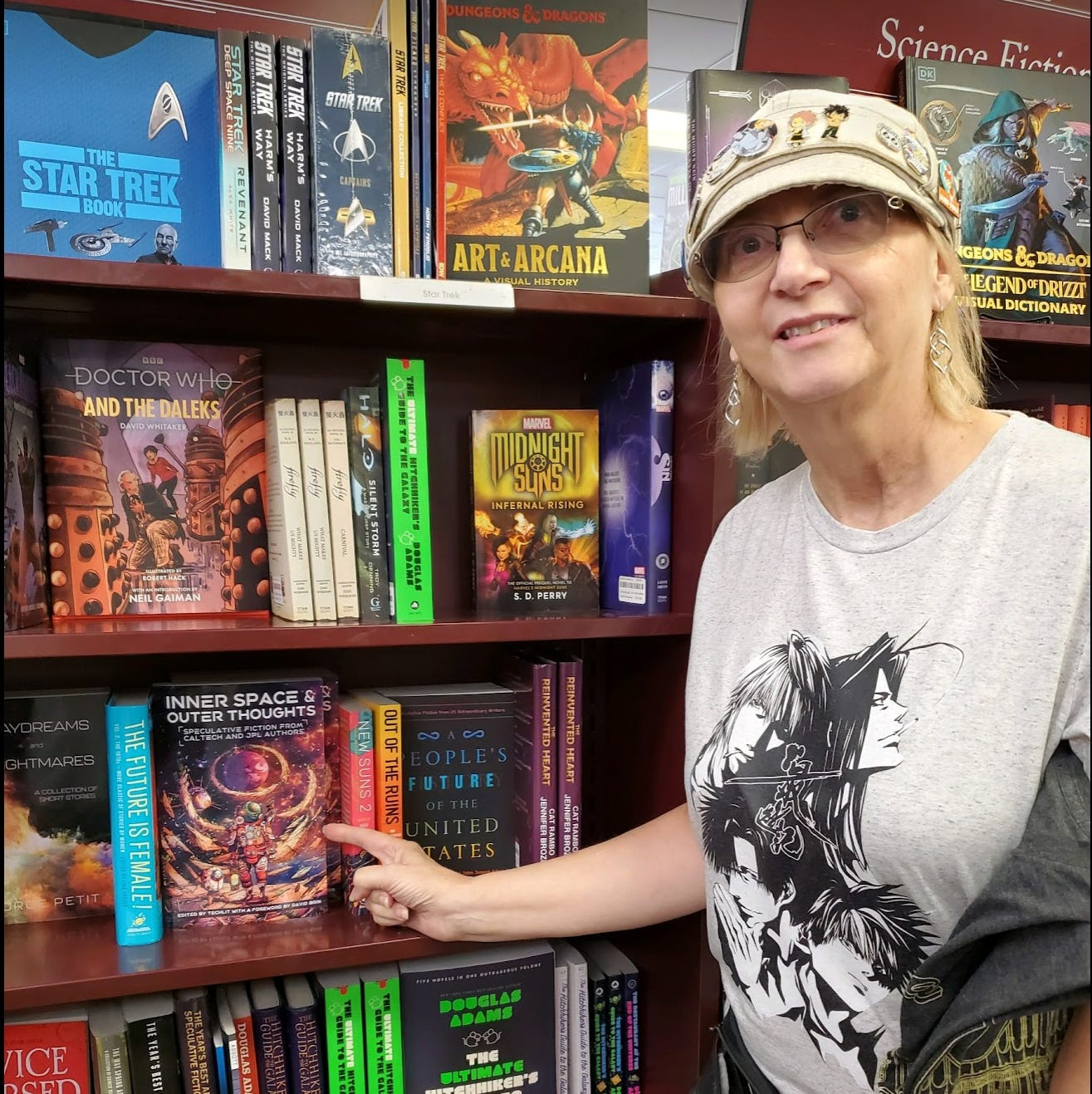The story behind Caltech’s first speculative fiction anthology - part 2
The logistics of self-publishing
Dear readers,
I hit a writing milestone this month: I sold my first short story! It’s called “The Hydra vulgaris self-reassembly experiment: an anarchist fairy tale” and it’s set to appear in Anarchist Fictions Journal in January 2025. I’m not allowed to share this story with you yet, but I will tell you what inspired me to write it. Werner Herzog came to Caltech last year for a screening of his new neuroscience documentary, Theatre of Thought. The film featured a neuroscience researcher who uses the fresh-water polyp Hydra vulgaris as a model organism, and he mentioned that this creature is biologically immortal to the point that if you blend it up in the lab, it can reconstitute itself into a normal animal in three days. I scribbled down my story idea then and there.

I’m celebrating this short story sale because my previous publications in various lit magazines and anthologies were unpaid. I have not written many short stories; after finishing my biochemistry PhD last summer, I’ve spent most of my time on the young adult sci-fi novel I’m wrapping up with Sam Clamons (The Ghosts of Gadolin). My “Hydra” story is the only work of short fiction I’ve completed this year, so I guess my publication rate is now 100%. ;)
Now for part 2 of the story behind the Caltech anthology…
AKA - how to self-publish a book (a case study)
Feel free to share this with anyone you know who might be considering the self-publishing route!
Last month, I described how we (the editorial board of Caltech’s creative writing club, TechLit) assembled and edited the content of Inner Space and Outer Thoughts: Speculative Fiction From Caltech and JPL Authors. With the manuscript in hand, we had a choice to make: should we try to publish through a traditional press, or do it ourselves?
Several industry professionals advised us that community anthologies like ours are hard to sell to publishers because they aren’t very profitable. Still, we decided to try our luck, because it’s less work to publish traditionally than to self-publish. We first submitted the manuscript to MIT Press, which considered it for four months before passing. We tried again with Baen Books, which considered it for ten months before passing. (A year is not an uncommon length of time to wait for a press’s decision.)
By this time, several of our editors were in danger of graduating or otherwise moving on from Caltech or NASA’s Jet Propulsion Laboratory (JPL). So, we decided to take control of the timeline and publish it ourselves.
Here’s how we did it:
Commissioning cover art: We needed an artist and graphic designer to create the book’s front cover, back cover, and spine, as well as a square audiobook cover. The publishing platform we decided to use, Amazon Kindle Direct Publishing (KDP), provides the following cover image design specifications for printed books:

Amazon KDP’s specifications for book cover image files. See the full-size version at: https://kdp.amazon.com/cover-calculator We searched for prospective illustrators on ArtStation, and the editorial board voted to select an artist from a few promising options. We ultimately hired Christian Benavides (Voyager Illustration) because of his awesome style and responsiveness. The cover creation process was iterative—Christian proposed several concepts, we voted to select one, and we suggested adjustments during the drawing and coloring stages. Here’s an earlier stage of the front cover’s development:

Screenshot of an early stage of front cover development for INNER SPACE AND OUTER THOUGHTS. Shared with the permission of the artist, Christian Benavides (Voyager Illustration). Here’s the final version of the full cover:

Full cover image for the paperback version of INNER SPACE AND OUTER THOUGHTS, designed by Christian Benavides (Voyager Illustration). Note: cover art can be one of the largest upfront expenses when self-publishing, but a book’s cover quality is an important determinant of the book’s success.
Copyediting: Although we had a board of twelve editors, we still hired a professional copyeditor (Rebeccah Sanhueza) from a local small press to catch typos and formatting issues in the final manuscript—and catch them, she did. Copyediting can be pricey but if you want your book to look professional, don’t skip this step!
Typesetting: This is the process of turning a manuscript into a formatted ebook or PDF for printing. For this, we used Vellum, a one-time software purchase. Vellum has limited formatting options but that was a plus for me—I’m prone to choice paralysis. Vellum is quite user-friendly and I would definitely use it again.
Publication agreements: When publishing content you did not create, the author or artist must formally confer those publishing privileges to you (to Caltech, in our case). Caltech’s Office of General Counsel helped us create these publishing agreements (shoutout to Chantal D’Apuzzo!). Such agreements also establish the author’s compensation or royalty entitlement. In our case, all stories were donated and all royalties go to the TechLit club in perpetuity. We used Docusign to facilitate document signatures.
Establishing a publishing imprint: Inside every book, you will find the name of the publishing entity. When self-publishing, you can choose any available name you want; this name is your publishing imprint. Since our writing club was called TechLit, we picked “TechLit Publishing” as the name of our imprint. In addition to Caltech’s logo, we wanted to add a publisher logo to the book’s spine. Caltech grad student Sami Chang created this awesome graphic for us:
Ebook publishing: We published through Amazon Kindle Direct Publishing (KDP), which involves uploading your ebook file (e.g., exported by Vellum) and cover image through the online portal. Side note: Amazon KDP’s software checks for typos in the book. With sci-fi, intentional typos are not uncommon, but KDP’s proofreading software hated one of our stories in particular. In Olivia Pardo’s “Degenerates,” the main character—an AI—experiences cognitive decline such that its log entries contain an increasing number of typos. This report made me laugh:

Screenshot of Amazon KDP’s spellcheck report on the INNER SPACE AND OUTER THOUGHTS ebook. 72 spelling errors were found, all intentional misspellings, and most from the “Degenerates” story by Olivia Pardo. The screenshot font is tiny, so here’s the relevant section from “Degenerates”:
Message to D17865 from D2226: Urgentx. Deteroation: 49.7%. Do not opecn messageee fro7m D8923. Trojan Hors22e. Corrupt memkmory moduleqs. Initiatin4g de4struct sequaence in 562.3 yeahrs. All myy neutrinos lost. I have failecd. I hadve faipled. I h9ave afailed. Ik haavee faailedh. Ip ha9ve faa8iled. I havge failedx. I7 haiove fr9ailedm. Ime hcm3ave f8ailtemd. Qi hkc9vt a8akled.
(As you can probably imagine, this story was challenging to translate to audio, but with narrator Ibba Armancas’s acting skills and producer Adam Pracht’s stellar audio engineering, it turned out amazing. More on audiobook production below.)
Paperback publishing: We also printed the paperback through Amazon Kindle Direct Publishing (KDP). This involves uploading your print PDF document (e.g., exported by Vellum) and your book cover—front, back (with barcode), and spine together in one image file. Before enabling public sales, you can (and should) request a “proof copy” to verify printing quality and layout. Also, holding that first copy in your hands… It’s an amazing feeling. This photo’s lighting is terrible but it’s the first photo taken of me after the proof copy arrived—you can see how happy I am, hugging that book like I’ll never let go:

Rachael Kuintzle hugging the proof copy of INNER SPACE AND OUTER THOUGHTS moments after receiving it in the mail. The background of Rachael’s extremely messy apartment has been removed. And here’s another where you can actually see what the proof copy looks like, including the ‘Not for Resale’ banner across the front:
Paperback distribution: In my opinion, one of the biggest drawbacks of self-publishing is the difficulty of getting physical books into brick-and-mortar bookstores (though this problem is not always avoided with traditional publishing, either). Amazon KDP offers an “expanded distribution” publishing option, which allows libraries and bookstores to order copies of your book wholesale:

Screenshot of Amazon KDP’s pricing and distribution section. We enabled ‘Expanded Distribution’ so libraries and bookstores could order the book, and we priced the book about as cheaply as possible for accessibility purposes. Amazon periodically increases their printing costs such that the royalty rate slightly decreases. However, bookstores won’t order copies unless you convince them, individually, to do so. We focused our efforts on local stores such as the historic Vroman’s Bookstore in Pasadena and the Flintridge Bookstore, which were happy to stock the book (though some preferred to sell on commission).

Contributing anthology author Ann Bernath at Vroman’s Bookstore in Pasadena, CA, pointing to INNER SPACE AND OUTER THOUGHTS, shelved outward-facing in the science fiction section. Photo used with permission. Of course, readers can also order paperback copies from Amazon.com, and TechLit earns higher royalties when they do, but we’ve tried to encourage purchases through local bookstores to support those businesses.
Audiobook production: Hiring out audiobook production and narration is expensive. Many self-published authors opt out or use AI-generated narration, but it was important to our editorial team to use humans. You can always try to record yourself if you have a decent recording setup and voice-acting skills. However, that may be a gamble because some audiobook distributors like ACX (the backend of Audible) have rigorous and rather opaque quality standards—e.g., recordings must be free of “excessive mouth noise.” Fortunately, with funding from Caltech, we were able to hire a professional audiobook producer. One of our author contributors (shoutout to S. B. Divya!) connected us with the amazing Adam Pracht, a producer of Escape Pod: The Original Science Fiction Podcast, who agreed to do the project. With five incredible narrators (Adam Pracht, Ibba Armancas, Trendane Sparks, Shweta Adhyam, and KP Upadhyayula), we are thrilled with how it turned out.
Audiobook distribution: The most convenient way to self-publish your completed audiobook is the Findaway Voices platform (now owned by Spotify). After uploading your audio files and metadata through their portal, they send your book to all the major audiobook distributors (Audible, Spotify, OverDrive, Libro.fm, etc.) or your preferred distributor subset. I have lots of logistical advice to offer about audiobook production and publishing, but I won’t dump it all here. Feel free to reach out if you have questions!
Whew! So now you know how to self-publish a book, but how do you get people to read it? More on that next month, in the third and final installment of the story behind the Caltech anthology.
Thanks for reading!
Love,
Rachael




First congratulations on selling your short story! I am so proud of your work ethic and inspired by your writing.I love reading and listening to your voice its quite heart centered. I like the spine art by Sami Chang its simple, fun and active. TechLit ! wishing you many more successful collections.
Excellent summary of the self publishing process, Rachael ! I look forward to reading the anthology. Good luck.